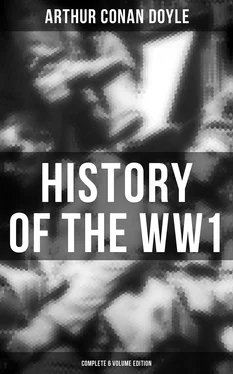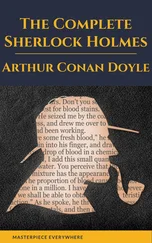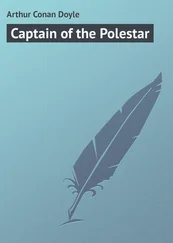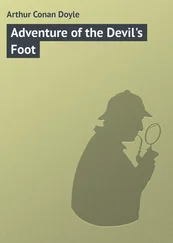On October 22 the Second Division of Haig’s First Corps, which had been fully occupied to the north with operations which will presently be described, moved down to cover the ground vacated by the Third Cavalry Division and to relieve the pressure upon the infantry of the Seventh Division. The 4th Guards Brigade took its position upon their immediate left. It was time. For four days they had covered the enormous front of eight miles against at least four times their own number, with more than six times their weight of artillery. It was touch and go. They were nearly submerged. It was indeed a vision of joy when the worn and desperate men, looking over their shoulders down the Ypres-Menin road, saw the head of a British column coming swiftly to the rescue. It was the 2nd Highland Light Infantry and the 2nd Worcesters, dispatched from the 5th Brigade, and never was reinforcement more needed. Shortly afterwards further help in the shape of a detachment of the Munster Fusiliers, two troops of the ever-helpful Irish Horse, and one section of artillery appeared upon the scene.
Upon this date (October 22) the 22nd Infantry Brigade of the Seventh Division had fallen back to the railway crossings near Zonnebeke. Thus the salient which the Germans had been attacking was straightened out. Unhappily, the change caused another smaller salient farther south, at the point which was held by the 2nd Wiltshires. On the 22nd and 23rd there was a tremendous shelling of this sector, which was followed on the 24th by an infantry advance, in which the Wiltshires, who had been previously much reduced, were utterly overwhelmed and practically destroyed. The disastrous attack broke upon the British line just after daybreak. The enemy pushed through behind each flank of the Wiltshires, elbowing, off the Scots Fusiliers on one side and the Scots Guards on the other. The Germans got in force into the Polygon Woods behind. There were no reserves available save the Northumberland Hussars, a corps which has the honour of being the first British territorial corps to fight for its country. With the aid of some divisional cyclists, this handful of men held back the Germans until the 2nd Warwicks from the north were brought to stem the advance. The Warwicks charged through the wood, their gallant Colonel Loring riding his horse beside them without boot or legging, having been wounded some days before. “Where my men go I go as well,” was his answer to medical remonstrance. He was killed by a bullet, but he died at a moment of victory, for his last earthly vision was that of his infantry driving the last Germans out of the wood. Besides their colonel, the regiment lost many officers and men in this fine advance, which was most vigorously supported by the 2nd Worcesters, the only reinforcement within reach. The Worcesters lost 6 officers and 160 men, but did much execution and took a number of prisoners.
At this time the 20th Brigade, being the extreme Hard fight right of the Seventh Division, held an extended line Brigade. from Kruiseik cross-roads, about a mile east of Gheluvelt village, to near Zandvoorde, with a salient at the village of Kruiseik. On the night of the 25th the Germans planned a furious attack upon the whole salient. The assailants, who were mostly Saxons, broke through the 2nd Scots Guards just north of Kruiseik and got behind the line, which was pushed back for some distance, though Captain Paynter, with the right-hand company, held his position. A counter-attack by the Guards retook the line, together with 200 prisoners, including 7 officers. On the morning of the 26th the Germans were back on them, however, and began by blowing in the trenches of the Border Regiment south of Kruiseik. The German guns had found the exact range of the trenches, and the defenders had the same terrible and intolerable experience which had befallen some of their comrades two days before. It was simply impossible to stand up against the incessant shower of shattering shells. So great was the concussion and the nervous strain that many of the men exposed to it got completely dazed or even became delirious. Grenadiers, Scots Guards, and South Staffords, of the 20th Brigade, held the line until the front trenches were carried by the Germans and many of the occupants made prisoners. It was pitch dark, and it was impossible to tell friend from foe. Major Fraser of the Scots Guards, going forward to reconnoitre, was shot dead and his party was destroyed. A house in a field taken by the Guards yielded no fewer than 200 prisoners, but in the confused fighting in the darkness our losses were greater than our gains. It was in this night-fighting that Lord Dalrymple, Colonel Bolton, and other officers, with some hundreds of men, fell into the hands of the enemy after a most heroic resistance to overpowering numbers and to a weight of artillery which was crushing in its effect. The King’s Company of the 1st Grenadiers was isolated and in great danger, but managed to link up with the British line. The 1st South Staffords also lost some hundreds of men, and was only saved by fine handling on the part of Colonel Ovens. Kruiseik was abandoned, and a new line taken up half a mile farther back. It was a critical night, during which the energy and firmness of General Capper were splendidly employed in reforming and stiffening his sorely tried division. On the 26th the 20th Brigade, which had been so heavily hit the day before, was drawn out of the line for a rest, and the two other brigades closed up to cover a shorter line. The work of the 20th at Kruiseik had been magnificent, but their losses were appalling, including their Brigadier, Ruggles-Brise, who was wounded. Here, for the instant, we shall leave the Seventh Division, though their ordeal was by no means done, and we shall turn to those other forces which had been forming in the northern or Ypres section of the long battle line.
The reader will remember, if he casts his mind back, that the whole British line, as it extended from the south about October 18, consisted of the Second Corps and the advance guard of the Indians near La Bassée; then, in succession, the Third Corps in the Armentières district, the First Cavalry and Second Cavalry near Messines and Wytschaete, the Seventh Division near Gheluvelt, and finally the Third Cavalry on their left, joining up with the French, who carried the line to where the Belgians were reforming on the Yser. The First Corps had detrained from the Aisne, and was concentrated between St. Omer and Hazebrouck upon October 18 and 19. They represented a last British reserve of about thirty-five thousand men to set against the large new armies who were advancing from the north. The urgent question to be decided was where they should be placed, since there were so many points which needed reinforcement.
Sir John French has explained in his dispatch the reasons which swayed him in deciding this question.
“I knew,” he said, “that the enemy were by this time in greatly superior strength upon the Lys and that the Second and Third Cavalry and Fourth Corps were holding a much wider front than their strength and numbers warranted. Taking these facts alone into consideration, it would have appeared wise to throw the First Corps in to strengthen the line, but this would have left the country north and east of Ypres and the Ypres Canal open to a wide turning movement by the Third Reserve Corps and at least one Landwehr Division which I knew to be operating in that region. I was also aware that the enemy was bringing large reinforcements up from the east, which could only be opposed for several days by two or three French cavalry divisions, some French Territorials, and the Belgian Army.”
He proceeds to state his opinion that the Belgian Army was in no condition to withstand unsupported such an attack, and that if it were allowed to sweep past us it was very likely to wash away all opposition before it, and get into the Channel ports in our rear. With this consideration in his mind. Sir John French took the bold and dangerous, but absolutely necessary, step of leaving the long, thin, thirty-mile line to do the best it could, and prolonging it by another ten or twelve miles by forming up the First Corps on the same alignment, so as to present as long a British breakwater as possible to the oncoming flood. There was nothing else to be done, and the stronger the flood the more need there was to do it, but it is safe to say that seldom in history has so frail a barrier stood in the direct track of so terrible a storm.
Читать дальше












